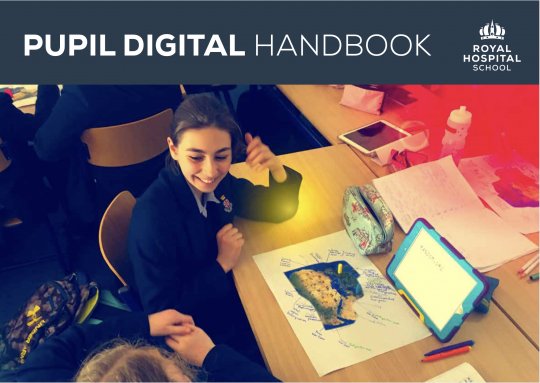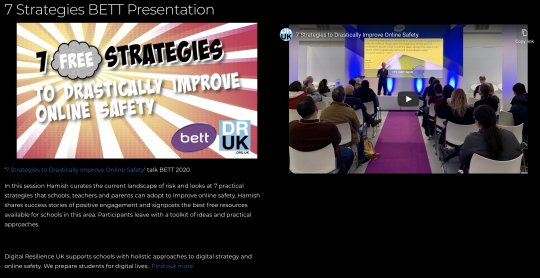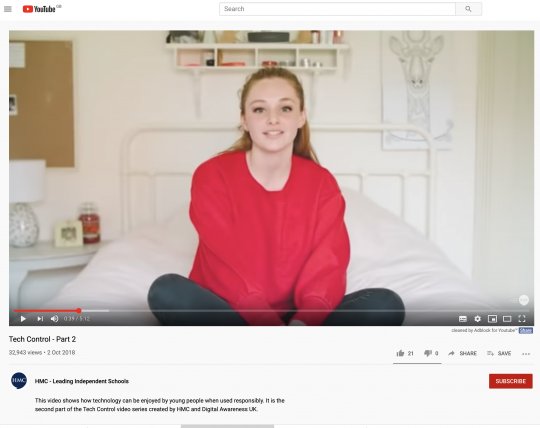Royal Hospital School London - our journey with 360-degree safe
The Royal Hospital School achieved 360 online safety mark in March 2018 after 18 months of reviewing and updating our approach to online safety. Whilst it was a substantial accolade to be recognised as a beacon school for online safety, the real gain has been the systems, protocols and procedures we have now embedded. The process of 360 review and accreditation meant subsequent institutional adjustments, such as complying with GDPR and deploying full remote learning, have been far less painful than they would have been without engaging with the 360 tool. 360 gave us a playbook on how to look strategically at technology within our organisation – in terms of curriculum, behaviours, stakeholder engagement and management overview. We have used the methodology to support continued progression.
Context:
The Royal Hospital School is unique school in many ways. We are an independent school with a long naval heritage of educating children from the armed forces. We currently have 750 students on roll with approximately 50:50 split of boarders to day pupils. The school occupies a large rural site in Suffolk, with buildings separated in geographical space. We have invested heavily in technology over past five years and currently run a one-to-one iPad programme supported by Microsoft 365 cloud infrastructure. Within our pupil body, we teach children from 38 different countries and are currently delivering a full synchronous remote learning programme as a result to the Covid-19 pandemic.

360 Journey
After deploying our iPad programme 2015, we soon recognised that digital safeguarding needed to be high on the priority list. The method of pupils’ internet consumption moved from shared PC labs in communal areas, on to personal devices accessible at all times - in boarding houses, corridors and areas where supervision could not be guaranteed. Our thinking had to change to keep up.
We formed an eCouncil to ensure representation from each year group, boarding house, staff and management to develop fair and equitable polices. This was supplemented with an IS strategy group formed of teaching, pastoral and support staff to ensure the behaviour we were seeing at the coal face matched our plans. Where it did not, we adjusted policy and protocol to better fit the behaviours we were seeing on the ground. We soon realised the importance of clear expectations, training and induction. 360 led us to amalgamate and cross reference many of our policies to ensure cohesion and consistent messaging. We then boiled these policies down an Acceptable Use Policy (AUP) which included the core messages students needed to know to safely use the technology. Most of the information is around behaviours rather than the technology. The digital handbook gives students a clear line on our expectations and the relevant digital sanctions.
Students are given a quick start guide at the start of the year before they get online for the first time. They are then given 3 weeks to read and understand the full digital handbook. In week 3 of the autumn term we send out a series of multiple choice tests to all our students (increasing in complexity and appropriate to each year group age). If they pass the test, they receive a digital licence which allows them to access all network services, our app store and social media.
As a result of the eCouncil and IS strategy groups, we changed our iPad policy to school-owned iPads rather than BYOD, and altered our app store to a ‘white-listed’ approach rather than open access to the Apple app store. This had a dramatic effect on cutting Virtual Private Network (VPN) usage and the associated safeguarding concerns associated with VPNs.

If things go wrong, we can revoke digital licences, forcing the student needs to come and have a conversation about what went wrong and why. This way, we can address the behaviour and apply an appropriate sanction in a restorative rather than punitive fashion.
Alongside focusing on pupil behaviour, we also rewrote our online safety curriculum. We created curriculum space in KS3 for a new subject called Compass which combines PSHE, digital skills, online safety and thinking skills. We have mapped our curriculum all the way through to year 13 and deliver key messages throughout the curriculum with a bespoke unit in the 6th form called RHS+ where students learn about issues such as deep fakes, source veracity, cultivating professional online footprints, AI, machine learning and the 4th Industrial revolution.
Training
Perhaps the most important part of our online safety journey has been to recognise the need to keep training and engaging with our staff and parents on issues of online safety. Just because the technology is ubiquitous, it does not mean that teachers necessarily know the dangers and how to support young people who are quite legitimately exploring their identity, building social networks and experimenting online - essentially being teenagers in online spaces.
Each year we engage with external speakers to talk to our staff and we require that all staff complete an online unit to keep their knowledge up to date. We have moved all safeguarding systems to CPOMs allowing better tracking of online incidents. Twice each year we invite parents in to hear talks on current trends in online safety. We regularly send messaging home with key advice on platforms or trending behaviours that may be of concern. We stress the importance of sharing concerns and a two-way conversation so that we can piece together issues when they arise as more often than not, issues are not limited to one person but affect groups of young people.
We also started to engage beyond our campus by contributing to national education resources. We worked with Digital Awareness UK and HMC to produce ‘Tech Control 2’, an online safety film that has clocked up over 30,000 views on YouTube.
Outcomes
The 360 process took a lot of evaluation and adjustment to our systems but as a result of the evaluation our students are far better protected. Our governors and staff are engaged in the process. Systems that ensure online safety are fed into fabric of what we do. As an organisation we recognise our responsibility to do a good job of online safety as it has been our decision to put connected technology in the hands of all of our pupils.
As an institution we are better positioned to deal with changing nature of online risks through a combination of clarified accountability lines, improved technical systems and formally involving more stakeholders in the process. We now support other schools with digital strategy and online safety and are regularly asked support and contribute to conferences around digital strategy and online safety.
My main advice would be build a team that is representative of all stakeholders, run through the 360 tool, delegating relevant parts to appropriate people. Whilst the 360 tool does take a commitment of time and energy, your school will undoubtedly be in a better position as a result.
For more information on 7 simple strategies to improve online safety, check out the Digital Resilience UK BETT 2020 talk.

Hamish Mackenzie is the Founder of Digital Resilience UK and also works as Director of Digital Strategy at the Royal Hospital School
Contact
Additional Links:

